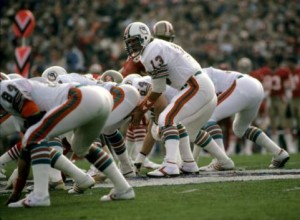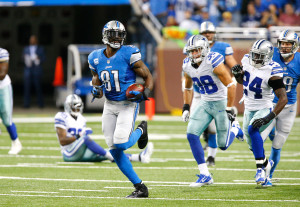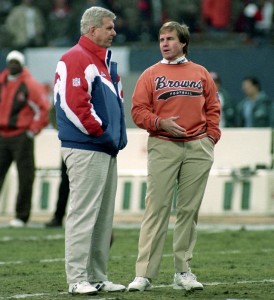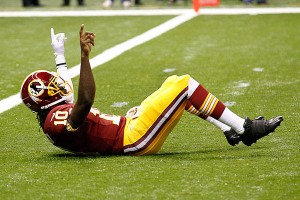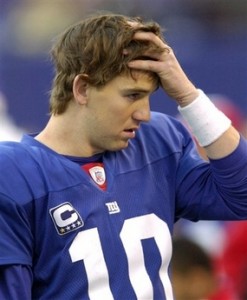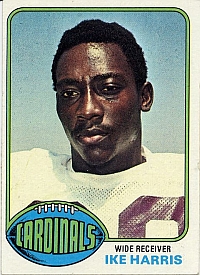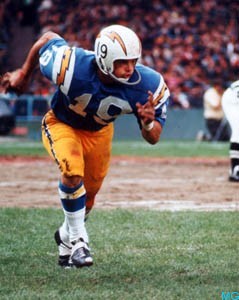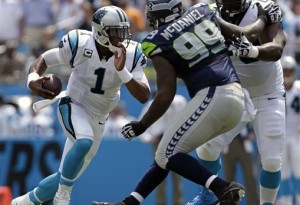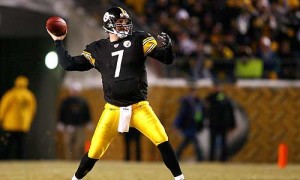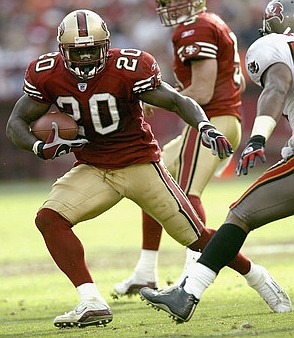Let’s just assume that Auburn defeats Missouri this afternoon and Ohio State defeats Michigan State tonight. Which team would have pulled off the more impressive feat: Ohio State, going undefeated against a relatively easy schedule, or Auburn going 12-1 against a harder schedule? That’s a tricky question to answer, but here is one way to think about it.
To make the math easier for everyone — and the answer won’t be practically different otherwise — let’s eliminate the eight easiest games on each team’s schedule. For Ohio State, that means elminating wins over Florida A&M, Purdue, San Diego State, California, Buffalo, Illinois, Penn State, and Indiana. For Auburn, we remove wins over Western Carolina, Arkansas State, Florida Atlantic, Arkansas, Mississippi State, Washington State, Tennessee, and Mississippi. A team arguing that it should be the #2 team in the country is going to win those games over 95% of the time. Granted, this slightly disadvantages the Tigers as they had a slightly harder bottom eight, but you can include those games if you want to do more heavy lifting. For now, let’s just focus on each team’s toughest five games.
Ohio State will have gone undefeated against Wisconsin, Michigan State, Michigan, Iowa, and Northwestern. Is that more or less impressive than going 4-1 against Alabama, Missouri, LSU, Texas A&M, and Georgia? One way to can answer this question is by looking at a team’s win probability in each game.
Let’s assume that Ohio State has an SRS rating of 62.1. Why that number? You’ll see why in a minute. When the Buckeyes hosted the Badgers (SRS of 53.8), how likely was Ohio State to win? If we give three points for home field, that would make the Buckeyes 11.3-point favorites. And we can use the following formula to determine how likely an 11.3-point favorite is to win a given game:
(1-NORMDIST(0.5,-(home_fav),13.86,TRUE)) + 0.5*(NORMDIST(0.5,-(home_fav),13.86,TRUE) – NORMDIST(-0.5,-(home_fav),13.86,TRUE))
Based on this formula, an 11.3-point favorite would win 79.2% of the time. Against Michigan State (48.8), Ohio State would be a 13.3 point favorite if the Buckeyes had an SRS rating of 62.1, which translates into an 83.1% win probability. For Michigan, Iowa, and Northwestern, the spreads and win probabilities would be 15.4/86.7%, 20.3/92.8%, and 22.6/94.8%, respectively.
Now, what are the odds that Ohio State would win all five of those games? That is simply the product of 79.2%, 83.1%, 86.7%, 92.8%, and 94.8% — which is 50%. That’s not a coincidence, of course: the reason I picked 62.1 is because that’s what rating Ohio State would need to have in order to have a 50% chance of going undefeated against those five teams. In reality, the Buckeyes have a rating of 56.1, which indicates that — like just about every undefeated team — they were a little bit lucky to go undefeated (assuming, of course, that they beat Michigan State).
Now, let’s use that same 62.1 rating number to go through Auburn’s schedule. At home against Alabama (rating of 56.4), a team with an SRS rating of 62.1 would be a 5.7-point favorite, and have a 65.9% chance of winning. In Atlanta against Missouri (55.7), the team would be a 6.4-point favorite, and have a 67.8% chance of success. The team would be 8 point favorites in Baton Rouge — the game Auburn lost — against LSU (51.1), and have a 71.8% chance of winning. The games at Texas A&M (48.9) and at home against Georgia (48.5) would have 76.9% and 88.4% chances of victory.
Now, the odds of winning all five of those games is just 21.8%, which is a very long-winded, mathematical way of saying what we all know: Auburn faced a harder schedule. But what are the odds of going 5-0 or 4-1 against that schedule? Well, the odds of going 4-1 is just a bit more complicated.
- The probability of beating Missouri, LSU, A&M, and Georgia, but losing to Alabama, is 11.3%;
- The probability of beating Alabama, LSU, A&M, and Georgia, but losing to Missouri, is 10.4%;
- The probability of beating Alabama, Missouri, A&M, and Georgia, but losing to LSU, is 8.6%;
- The probability of beating Alabama, Missouri, LSU, and Georgia, but losing to A&M, is 6.6%; and
- The probability of beating Alabama, Missouri, LSU, and A&M, but losing to Georgia, is 2.9%.
Therefore, the likelihood of going 4-1 is 39.6%; that means the likelihood of a team with an SRS rating of 62.1 going 4-1 or 5-0 against those five teams is 61.4%. While there are many assumptions implicit in this post, the conclusion is that it is harder to do what Ohio State will do if it wins tonight than what Auburn will do. Adding in the bottom 8 opponents for each team won’t change the numbers much (you can run the numbers using the above formula).
What would change the numbers is changing the ratings of some of the team’s opponents. If, for example, Alabama had a rating of 69 instead of 56.4, then a team of a a quality equal to 62.1 would win that game only 38.9% of the time, and the odds of going 4-1 or 5-0 against that schedule would be 50/50. But that’s a pretty significant increase to Alabama’s grade, of course.
For a team to have a 50% chance of winning at least four out of five games against Alabama, Missouri, LSU, A&M, and Georgia, they would need a rating of 59.8. But a team with a rating of 59.8 would only have a 40.5% chance of not dropping a game to Wisconsin, Michigan State, Michigan, Iowa, or Northwestern.
Of course, I’ve followed college football long enough to not wait until Sunday to make this post. That’s because there is only a 30% chance of both Ohio State and Auburn winning today. We could perform the same analysis for Missouri, but the results would only look worse for the SEC crowd, as those Tigers have had an easier schedule than Auburn. Assuming a rating of 62.1, a team would have a 36.8% chance of beating Auburn, Georgia, South Carolina, A&M, and Ole Miss, and a 78.0% chance of winning at least four of those games. In fact, a team would only need a rating of 56.0 to have even odds of going 5-0 against those teams.
The more interesting case, however, is Florida State. Assuming a rating of 62.1, the Seminoles would have a 69.8% chance of winning in Clemson, and then over a 90% chance of winning every other game (Duke will be the second toughest game of the year for FSU). That means a 62.1 SRS team would have a 53.0% chance of going 5-0 against Clemson, Duke, Florida, Pittsburgh, and Boston College; a team that had only a 50% chance would need a rating of 61.4, slightly lower than what Ohio State has produced.
That doesn’t mean Ohio State is more deserving of a spot than Florida State in the BCS National Championship Game, as FSU’s dominance is an element that can’t be overlooked. But I wouldn’t argue with you if you said that it was easier for FSU to go undefeated than it is for Ohio State.

